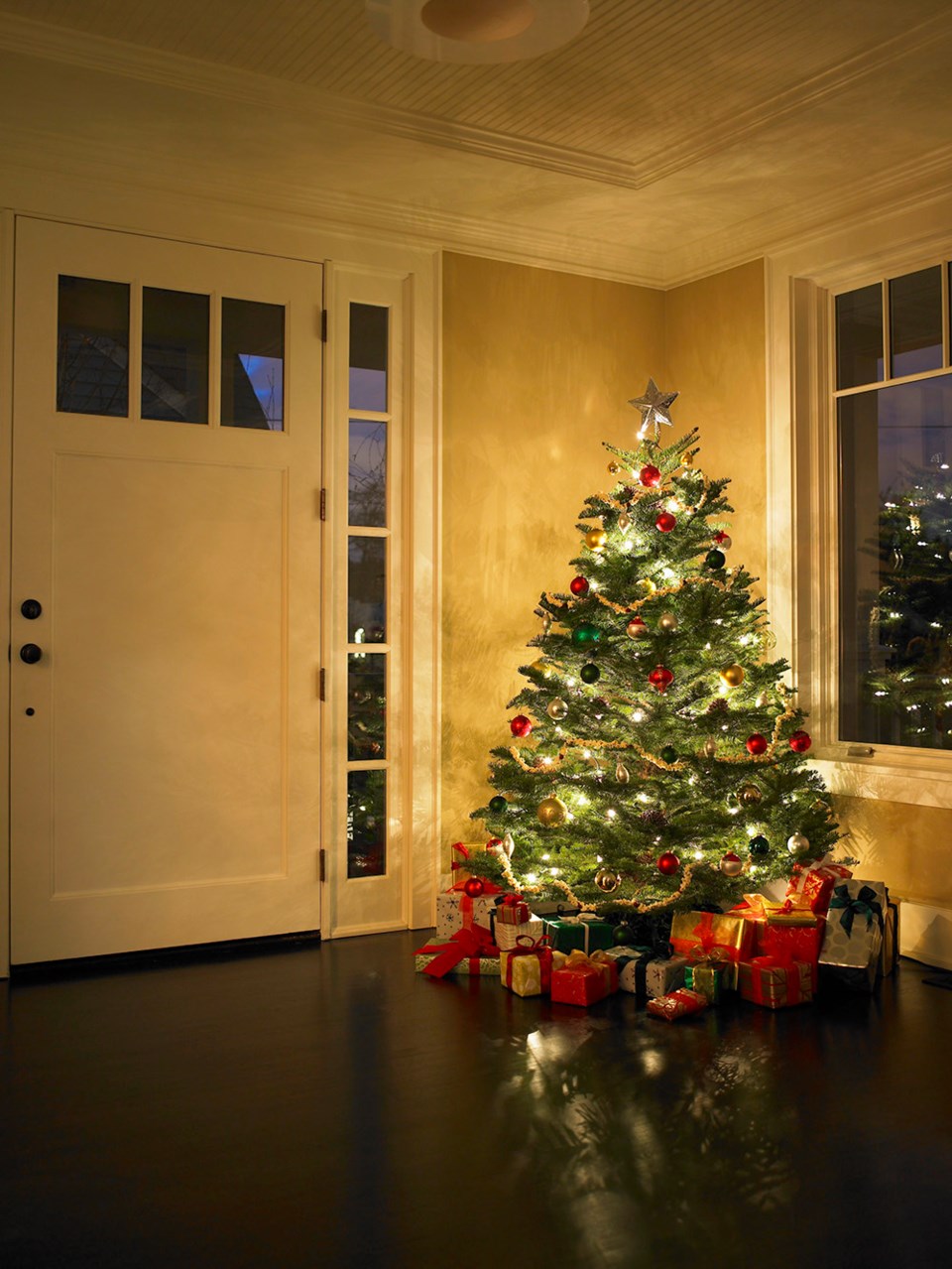No matter how large or small your home, there are green ways of celebrating Christmas from three-metre Christmas trees to compact tabletop centerpieces.
But when caring for any size Christmas tree, it's vital to know that temperatures inside homes are far too hot and dry for trees to be happy for long. This is true whether your tree is a cut one or a living one.
Living trees need lots of water and shouldn't stay inside more than 10 days. Any longer and their buds may start growing only to be injured when they're outside in the frost. The larger living trees tend to be relatively short and very heavy (because of all those healthy roots).
With cut trees, the water-conducting tubes will have sealed shut. That's why the end should be re-cut when you get it home, then it needs to stand in water. The best tree stands have a big water container which needs topping up very frequently.
It's amazing how wide and branchy a tree can become once you drag it into your living-room. Hopefully you will have already invested in loppers and be prepared to do some emergency pruning.
The bonus you get is extra boughs to use around the house with garlands, bows or other decorations. But it's much easier to measure your space beforehand and take the measure with you to check out likely trees.
Artificial trees come in all sizes. Some are full height but very narrow. Many of the shorter ones are pre-lit which is labour-saving but does rather limit creativity. Even living trees can be found in tabletop sizes usually in pots small enough to be carried home.
Later, they can be put outside and given lots of moisture. North or east balconies or decks are best because their roots need to stay cool. On south or west-facing areas summer heat and drought can kill them.
The ones that survive and grow will ultimately need to be transferred to larger pots. Or someone with a large garden may be happy to take them in.
Small holly plants are sometimes sold, especially the dwarf 'Blue Hollies.' These usually have blackish-green small leaves and are very slow-growing and hardy. When they begin fruiting, their berries aren't held in huge trusses but usually scattered throughout the branches.
People with large, well-stocked gardens can make wreath bases themselves from grapevine stems or other climbers. Or they can buy wreath bases and fill in the details themselves: evergreen branches: holly or other berries and possibly Christmas decorations. Or buy green-branchy wreaths and take it from there.
A quick and easy way of organizing Christmas decorations is arranging green and berried branches in vases inside or in earth-filled containers outside (above the sleeping spring bulbs perhaps).
Possibilities here are endless: Some people like to add contorted branches, sometimes painted white, silver or gold. Cones, either natural or painted gold or silver tipped can be wired into branches. Natural berries tend to drop but garden centres have some manufactured berry branches that don't.
One crucial point with small centre-pieces is to beware of candles. All conifers contain resins that are highly inflammable when branches age and dry out. If added, candles shouldn't be lit.
Anne Marrison is happy to answer garden questions. Send them to her via amarrison@shaw.ca It helps me if you can mention your city or region.



